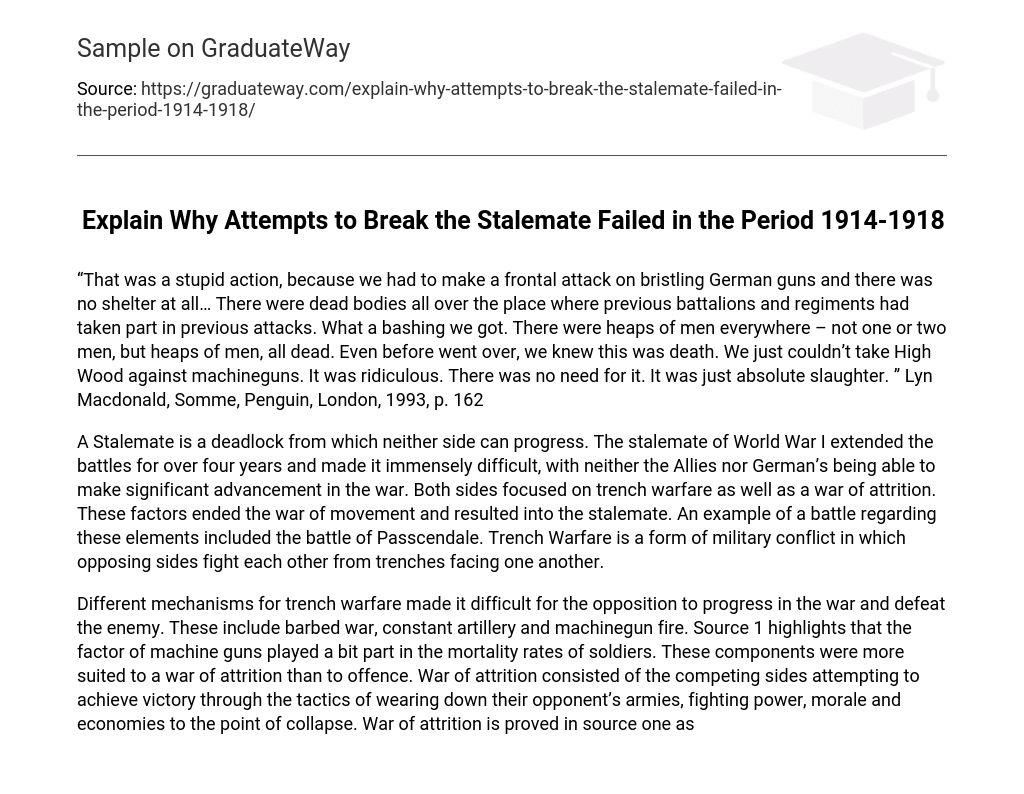“That was a stupid action, because we had to make a frontal attack on bristling German guns and there was no shelter at all… There were dead bodies all over the place where previous battalions and regiments had taken part in previous attacks. What a bashing we got. There were heaps of men everywhere – not one or two men, but heaps of men, all dead. Even before went over, we knew this was death. We just couldn’t take High Wood against machineguns. It was ridiculous. There was no need for it. It was just absolute slaughter. ” Lyn Macdonald, Somme, Penguin, London, 1993, p. 162
A Stalemate is a deadlock from which neither side can progress. The stalemate of World War I extended the battles for over four years and made it immensely difficult, with neither the Allies nor German’s being able to make significant advancement in the war. Both sides focused on trench warfare as well as a war of attrition. These factors ended the war of movement and resulted into the stalemate. An example of a battle regarding these elements included the battle of Passcendale. Trench Warfare is a form of military conflict in which opposing sides fight each other from trenches facing one another.
Different mechanisms for trench warfare made it difficult for the opposition to progress in the war and defeat the enemy. These include barbed war, constant artillery and machinegun fire. Source 1 highlights that the factor of machine guns played a bit part in the mortality rates of soldiers. These components were more suited to a war of attrition than to offence. War of attrition consisted of the competing sides attempting to achieve victory through the tactics of wearing down their opponent’s armies, fighting power, morale and economies to the point of collapse. War of attrition is proved in source one as





